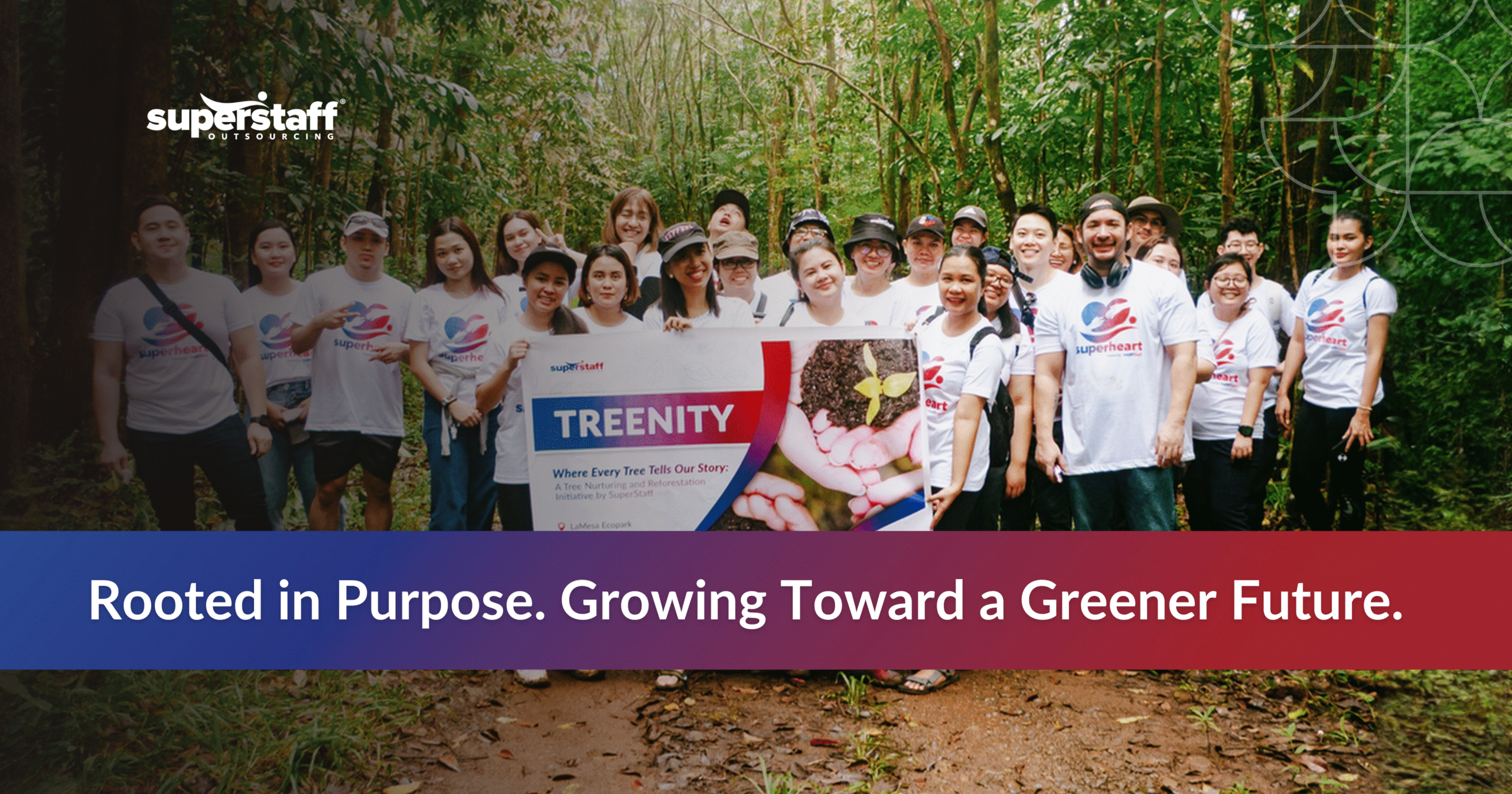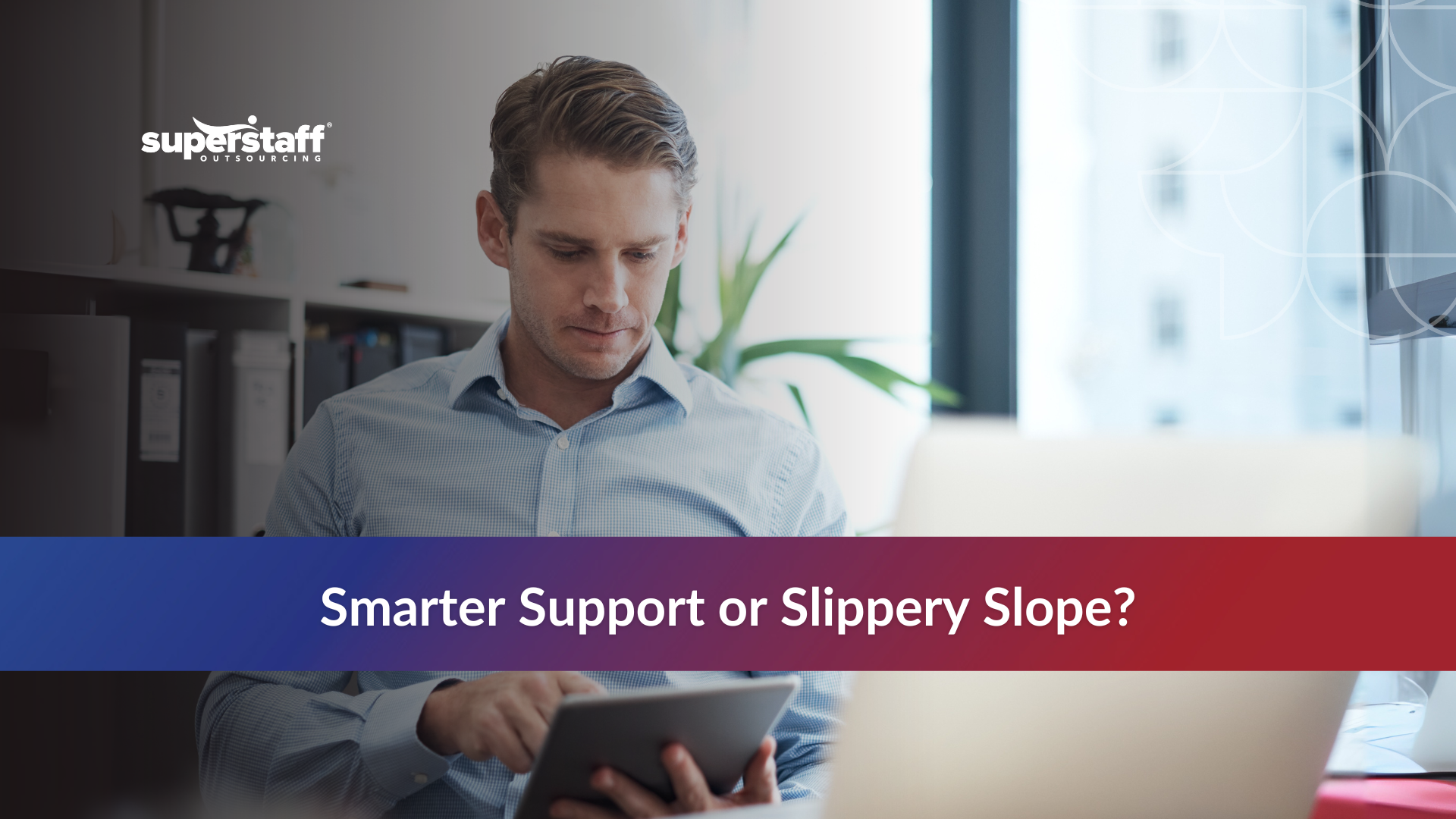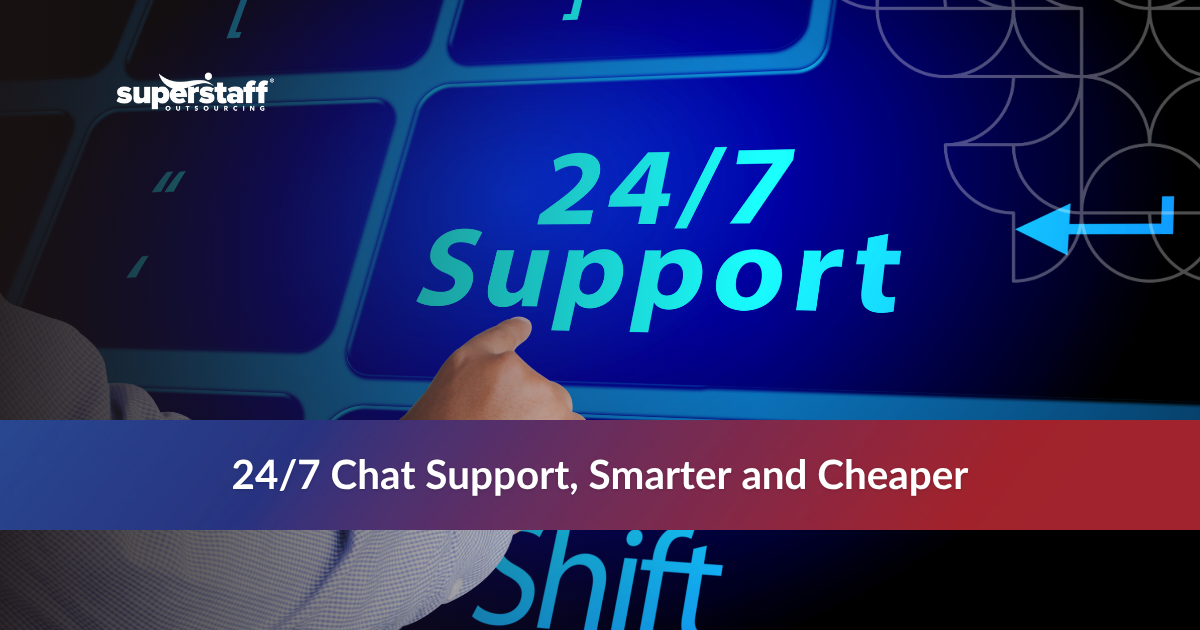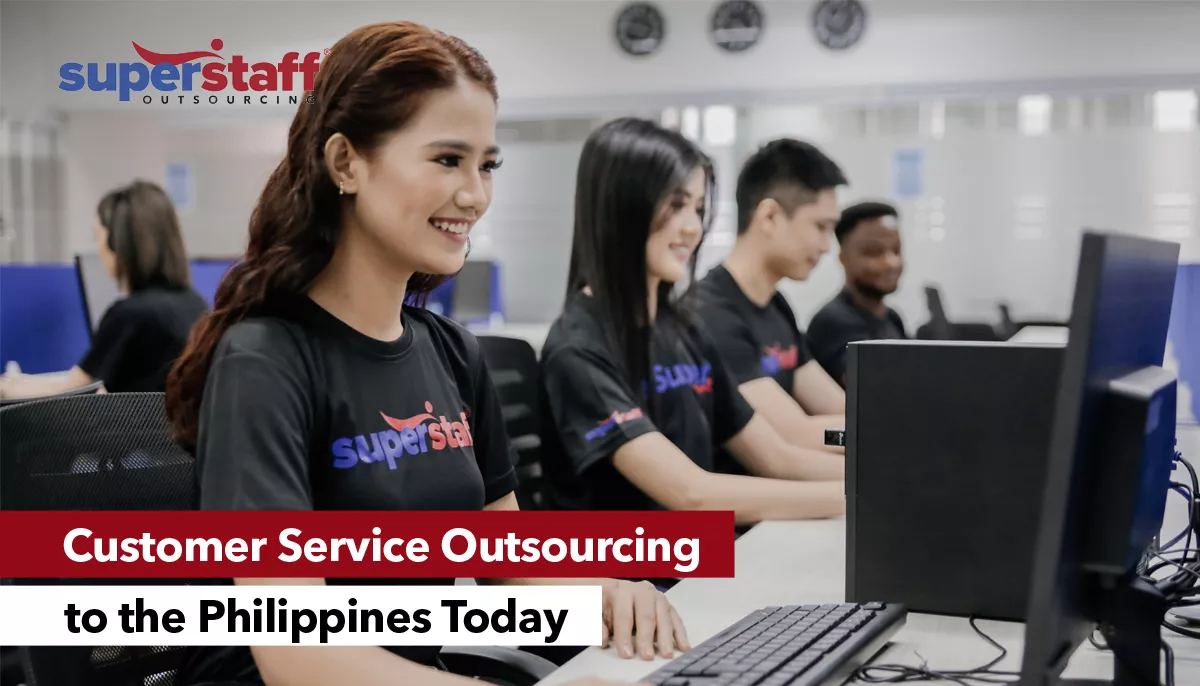
The tremendous growth of the Philippine call center industry proves that companies worldwide continue to embrace outsourcing as a logical business strategy. Every year, the sector generates nearly $30 billion worth of revenues providing start-ups to large enterprises with cost-efficient solutions to various pain points.
Still, many organizations fail to take advantage of outsourcing to the Philippines due to a lack of information. Many potential clients would show interest and go through the initial stages but eventually get overwhelmed and lost in the processes.
Contrary to some misconceptions, implementing outsourcing in the Philippines is simple. It doesn’t take long to launch a campaign and enjoy a significant return on investments, especially as BPO companies in the country continue to optimize processes to meet the changing needs of the global market.
If you are interested in outsourcing to the Philippines, this customer service outsourcing guide is what you need. Read on to discover how to navigate the process — from partner selection to program launch — easily.
How To Build a Customer Service Team in the Philippines
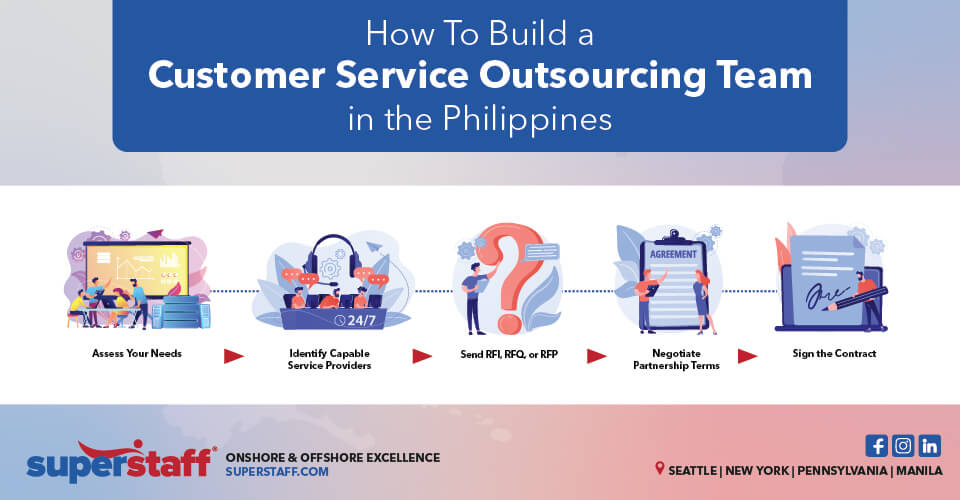
1. Assess your needs.
The first step is to identify what you need. What gaps do you need to fill, or what pain points do you need to address? Collect as much data as possible and involve key stakeholders in the process. After assessing your needs, use the information you’ve gathered to develop a project plan that includes:
- Baseline Project Scope
- Project Goals
- Budget
- Timeline
- Tasks
2. Identify the BPO companies with the capabilities to best match your needs.
Not all outsourcing companies in the Philippines are equal. It is crucial to perform due diligence and assess the providers’ capabilities to see if they match your business needs. An easy and effective way of searching and obtaining general information about a supplier is to visit their websites. Most legitimate contact centers have websites with the following information, at the least:
- Who are they?
- What products or services do they offer?
- Who do they serve?
- What are their competitive advantages?
3. Send at least one of the following documents to prospective outsourcing service providers:
Once you have a shortlist of the potential BPO service providers, the next step is to gather in-depth information about what the company can specifically provide your business. Send a formal request in the form of the following documents:
-
Request for Information (RFI)
This document is sent to suppliers to learn about their capabilities and compare them with other BPO companies. Your RFI doesn’t have to be long, and you can just straightforwardly ask for the information you need.
-
Request for Quotes (RFQ)
Also known as an invitation for bid, RFQ is a formal request sent to an outsourcing company to provide pricing quotes for your requirements. This document allows you to compare suppliers’ prices and payment terms.
Although going with the supplier that offers the lowest cost is very tempting, pricing should not be the sole deciding factor when choosing a customer service outsourcing partner. The overall competencies and values that BPO companies bring to the table should hold equal weight. To gain these insights, send a Request for Proposal.
-
Request for Proposal (RFP)
You send an RFP if you have a shortlist of outsourcing service providers, but have factors you want to check before making a decision. Often, these factors relate to the providers’ capabilities and unique propositions.
RFP outlines the specific services or products you want to procure. Here are the essential parts of this document:
- Project Overview. Write a concise description of your company and the project.
- Project Goals. Explain your vision for the project; what you expect to achieve within a specific time frame.
- Scope of Service. Describe what you expect the outsourcing company to accomplish.
- Company Roadblocks. Explain potential issues that may affect the project’s outcome.
- Required KPIs. Include the metrics that the BPO services provider has to meet.
- Proposal Requirements. Indicate what you need the vendor to submit in the proposal.
Sample Request for BPO Services Proposal

What To Look for in an Outsourcing Company’s Proposal or Quotes
Apart from the information you requested, you should also look for and evaluate the following information often provided by BPO service providers in the proposal:
- Partnership Launch Timeline. It shows the overview of the timeline and processes after the partnership is finalized. Usually, it specifies the average timeframe for the following:
- Agent Recruitment and Hiring
- Agent Training and Onboarding
- Going Live
- Nesting Period
- Operational Structure. This section explains the baseline structure of the company’s customer service outsourcing operation (more details about this below).
- Billing. It describes the terms of payment for the services, usually hourly. Base rate inclusions may also be outlined.
Here is a standard billing sample courtesy of SuperStaff:
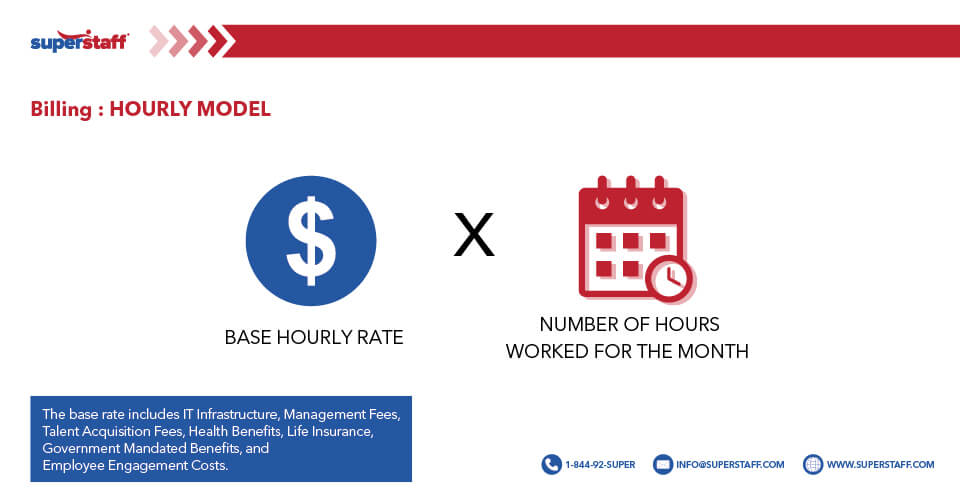
4. Negotiate the specific terms of the outsourcing partnership, then sign a contract.
One of the benefits of outsourcing is the flexibility and scalability of the partnership terms, keeping you in control of your business. To meet your needs, negotiate the details of your partnership with your customer service outsourcing provider accordingly. Once you have reached a final agreement, you and your BPO partner will sign a Master Services Agreement (MSA) or a Service Level Agreement (SLA).
What is SLA?
The service level agreement or SLA is a document that contains all the agreed conditions between the client and the outsourcing services provider. It highlights the duties and responsibilities of the client and the supplier to each other. Signed by all parties, SLA is also the basis for drafting the partnership contract.
The document’s primary purpose is to ensure the quality of the services acquired, communicate and align the expectations, and set objective standards.
The terms of the SLA can be customized according to your needs and agreement with your BPO contractor. Below are some of the standard information included:
- A detailed list of services to be provided by the BPO company (limitations or exclusions may be included to avoid vagueness)
- Agreed deliverables and deadlines
- Cost of service, billing details, and payment terms
- The number of people needed and other resources to be provided to deliver the service
- Criteria and methodology to be used to monitor and evaluate service delivery and quality
- Method and frequency of performance reporting
- Provision for contingencies
- Penalties to be imposed if agreed provision/s are not met
- Dispute and resolution process
5. Set KPIs for the outsourcing services provider.
To ensure service delivery according to your expectations and standards, set key performance indicators (KPI) for the outsourcing company. Use this method to evaluate whether the service provider meets your business goals/other targets.
Depending on your objective or requirements, your KPI requirements can be simple or comprehensive. Some of the common metrics monitored in a contact center as an enterprise are as follows:
- Service Level – reflects how many KPIs the BPO company targets achieved or surpassed.
- Support Costs vs. Revenue – describes how much your business spends on customer support in relation to its revenue.
- MRR Growth Rate – reflects how much growth the center made from recurring revenue.
- Net Promoter Score – represents how likely customers will promote your business based on their customer service experience (obtained through a survey).
- Customer Effort Score – describes how customers perceive the company’s ease of service (obtained through a survey).
- Net Retention Rate – measures the contact center’s ability to retain customers.
- Customer Churn Rate – measures the proportion of customers that have canceled their services or stopped making a purchase.
- Agent Attrition Rates – reflects the BPO company’s ability to retain customer service agents.
- Abandon Rates – represents the percentage of terminated calls or chats before reaching an agent.
- Average Speed of Answer – measures the average time customers wait in a queue before reaching a customer service agent.
The following individual agent or team metrics, explained further in the latter section of this article, are also often part of the KPI of BPO companies in the Philippines:
- Average Response Time
- First Call Resolution
- Customer Satisfaction
- Average Handling Time
- Quality Scores
How To Launch and Manage Customer Service Outsourcing Team in the Philippines
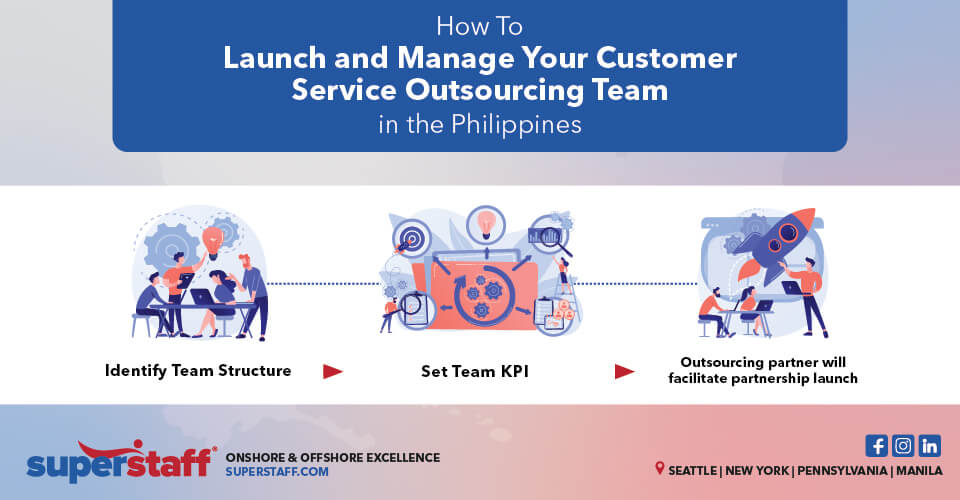
1. Identify your ideal customer service team structure.
Depending on your business’s size, needs, and goals, your customer service outsourcing team can be as big or small as you want. If you are clueless about your ideal customer service team structure, you can use SuperStaff’s standard operational structure as a baseline. Adjust the suggested baseline structure to suit your company’s size and needs.
Typically, our teams consist of the following:
- Country Manager – in charge of the country’s overall operations and business development.
- Director of Operations – oversees the daily contact center site operations and performance.
- Program Manager – develops programs and strategies aligned with the program’s objectives and performs high-level management to ensure proper execution.
- Team Leader – supervises a team of customer service or technical support agents or specialists.
- Customer Service or Technical Support Agents – attends to customer inquiries using different channels.
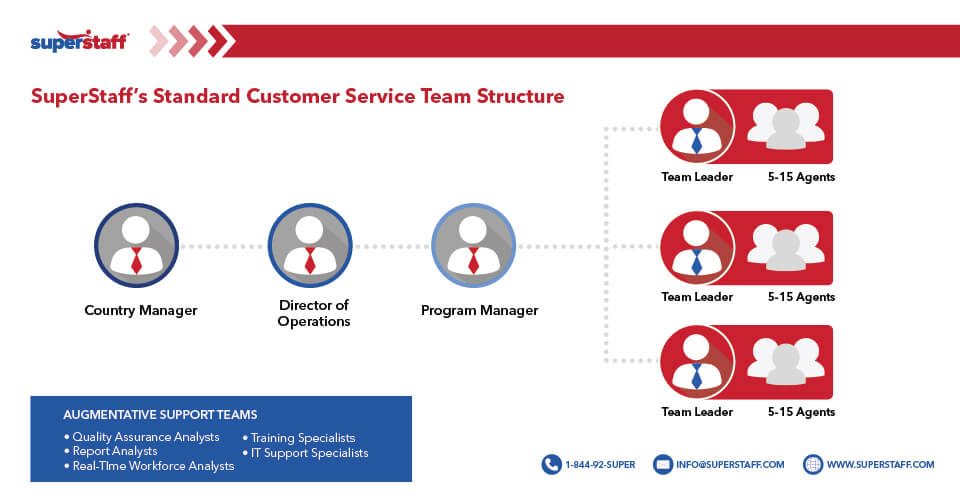
Startups and Small Businesses
Customer service outsourcing is ideal for all businesses, including start-ups and small organizations. You can build a small team of specialists capable of performing flexible roles. To boost productivity and customer satisfaction amid the small size, equip your frontline agents on how to use chatbots, AVR, and other automated tools efficiently.
Here’s what the team structure may look like:

Mid-Sized Companies
Companies of this size will have a more expanded customer service team structure. You will be more effective in delivering service and achieving customer experience if you have a team that has more focused roles.
Aside from the director of operations, program manager, team leader, and agents, you may need to have the following:
- Account Development Manager – in charge of developing sales plans and strategies.
- Customer Service Coordinator – assists in managing daily contact center operations to ensure team policy and procedure compliance.
This sample may give you a better idea of what your team structure may appear:
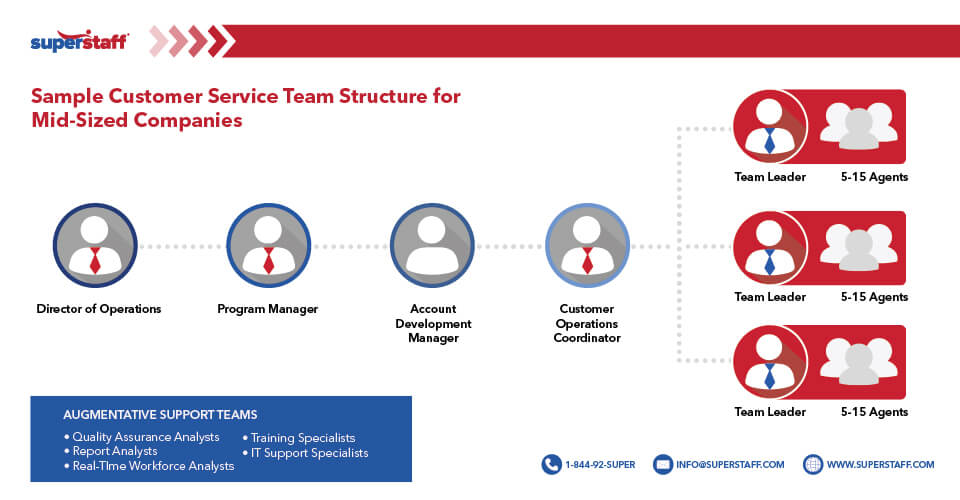
Enterprise-Level Organizations
If you run an enterprise-level business, your customer service outsourcing team structure will have more hierarchies and focused roles. The following functions may be needed in addition to the ones mentioned above:
- Director of Customer Success – responsible for building and ensuring proper execution of high-level strategies to achieve client objectives and satisfaction.
- Client Onboarding Team Lead – leads a team of onboarding and training specialists that facilitates a smooth client onboarding process.
- Customer Engagement Manager – builds and maintains relationships with present and future clients.
Here’s what your customer service outsourcing team might look like:

2. Set KPI for the team.
After identifying the operational structure, set target metrics for the customer service outsourcing agents and, aggregately, teams. These metrics must be aligned with the key performance indicators of the contact center. Setting team KPIs helps ensure the performance of individual agents and allows leaders to recognize top performers who can share their best practices.
Here are some of the typical agent metrics monitored in a contact center:
- Average Handling Time – the average time the customer service agent spends on every interaction.
- Average Response Time – how long it takes an agent to respond to each customer interaction (more common metric in live chat support).
- First Contact Resolution – the percentage of interactions where customers’ concerns are resolved upon first reaching out to the contact center.
- Customer Satisfaction (CSAT) Scores – the average survey score describing how happy or satisfied the customer was with the interaction with the agent.
- Quality Scores – the score that the agent gets from the evaluation made by the supervisor or quality analyst in the call, according to pre-set criteria.
3. Customer service outsourcing partners will facilitate partnership launches, from recruitment to going live.
After you have finalized and signed the customer service outsourcing contract, your chosen BPO company in the Philippines will begin to build and prepare your team for launching. Your outsourcing services partner will facilitate everything from recruitment to going live at this stage.
To ensure alignment, you may set a regular touch-base meeting with the company director or program manager. Of course, you may be as involved as you want, but the outsourcing company should take care of the bulk of the leg work.
Here’s a sample partnership launch timeline from SuperStaff:
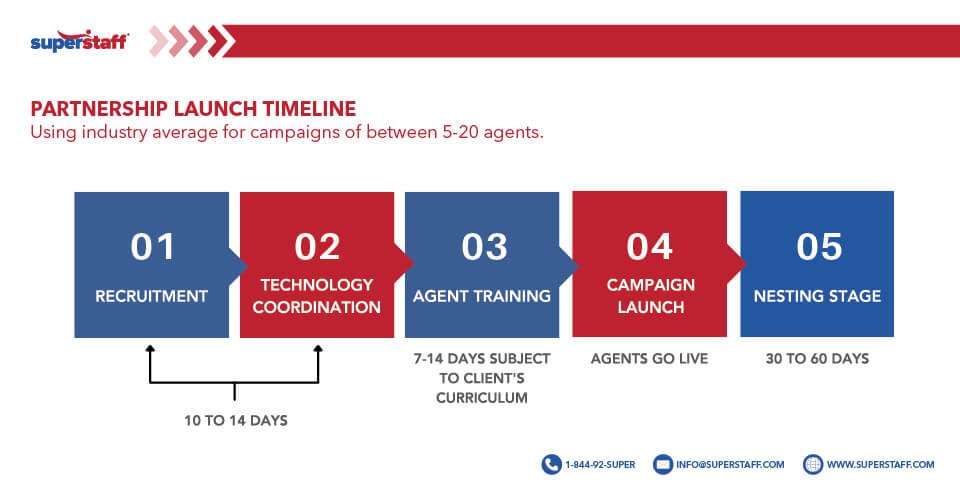
Recruitment and Hiring
After you finalize and sign the customer service outsourcing contract, your chosen BPO company in the Philippines will begin building your customer service team. The timeline for recruitment and hiring may vary depending on your team’s size and project complexity.
SuperStaff approaches recruitment with urgency and optimal efficiency. We begin filling the positions for technical recruiters a day after finalizing our partnership agreement. At the same time, we build the technical requirements the team needs.
Here’s our typical timeline for a campaign with 5 to 20 agents:
- Tier 1 (Easy): 7 to 15 days
- Tier 2 (Moderate): 30 to 45 days
- Tier 3 (Hard): 60 to 90 days
Employee Onboarding
Onboarding sets customer service agents up for success in their new roles. It involves activities integrating them into the organization and team’s culture, values, and visions. Employee onboarding orients employees on:
- Company Policies
- Tools, Portals, and Logins
- Employee Benefits
- Other Expectations
One of the essential aspects of employee onboarding is training.
Customer Service Agent Training
Training is an integral part of the employee onboarding process and success. According to Salesforce’s 2020 State of Service report, 55% of service agents believe they need to receive better training to elevate job performance.
Depending on your preference or general situation, training can be conducted through the following forms or a combination thereof:
- E-Learning Materials
- In-Person Classroom Training
- Instructor-Led Remote Training
What should be included in the customer service agent training?
For a customer service setting, here are some of the most crucial topics in training:
- Communication
Although more than 90% of the workforce in the Philippines is fluent in English, it is still essential that they undergo communication training to achieve consistency. Among the topics covered in communication training, particularly for agents interacting with U.S. customers, are:
- Grammar Rules
- Proper Diction and Pronunciation
- Conversational English
- Familiarization With Common Idioms
In most cases, voice customer service agents are also taught to achieve at least a neutral American accent.
Tip: Speaking exercises, such as impromptu Q&A, help agents practice verbal communication skills. It’s also a great way to boost their confidence!
- Culture
Familiarizing the agents with the culture of their customers is imperative to achieving a satisfying customer experience. Cultural awareness should not be missing from the customer service training curriculum. Among the topics often covered in culture training are:
- Basic Cultural Etiquette
- Traditions and Customs
- What’s Acceptable and Not
Since businesses now operate in a globalized landscape, it is also crucial for contact center agents to have multicultural sensitivity.
Tip: Watching documentaries and movies is an effective and fun way to learn about a culture. Consider incorporating a viewing session or two during training.
- Customer Handling
Dealing with frustrated customers is part of the reality of working in the customer service outsourcing industry. Honoring employees’ soft skills and emotional intelligence during training is crucial. To practice an agent’s customer handling skills, simulate difficult calls based on real-life scenarios during training.
Tip: It also helps to expose the new agents to actual calls. Shadowing or observing how a tenured colleague takes live calls and delivers exemplified customer experience is a great way to facilitate skill transfer.
- Account-Specific Training
This training involves equipping agents with comprehensive knowledge about the company they’ll be representing, its products or services, policies, clients, and other related facts. This is the most information-focused part of a customer service agent’s training.
Tip: Gamification works even for adult learners! To enhance knowledge retention and engagement among the trainees, consider facilitating short quizzes or quick recitations. Make it fun and exciting by giving tokens to top achievers.
- Tools Usage
Agents often use more than one tool while interacting with customers. Apart from being familiar with navigating each tool, it is also vital to equip them with techniques to multitask and maximize automated tools effectively.
The most effective way to train agents in this area is to give them a lot of hands-on training using simulated programs. Self-service training portals containing step-by-step visual instructions or video tutorials are also excellent training aids for tool usage.
Some of the common topics covered in tools and technology training are:
- Creating Tickets
- Navigating Customer Account Management Software
- Using Account Knowledge Base
- Transferring Calls
- Using Live Chat Software
- Reviewing Analytics and Reporting Tools
Tip: Most tenured agents are expert multitaskers. Tap them to peer mentor new agents or invite them to share best practices in one classroom training session or two. It’s an excellent way to practice leadership skills while getting to know new colleagues.
Going Live
After completing training and employee onboarding, customer service agents are ready to take live calls or chats. However, the environment and pressure on the production floor are different than in training. Nerves usually set in when agents transition from the training environment to live work, especially if they have no experience working in a contact center environment.
- Nesting Stage
To facilitate in-depth industry and process familiarization, technical and customer service agents undergo a nesting or transition stage. The length of the nesting period may vary depending on the program and the size of the team.
For SuperStaff, it runs between 30 to 60 days. During the nesting stage, the agents are assessed daily, weekly, and monthly during this period based on incremental key performance indicators (KPIs).
- Buddy System
A buddy system can also help ensure quality service while easing the new agent into taking live calls or chats. It is done by pairing a challenged rookie agent with a fellow rookie who performed well in training (if all team members are rookies) or with a tenured agent. This process allows them to get the support they need while transitioning.
Are you ready after reading this customer service outsourcing guide? Take note of these labor regulatory policies and guidelines.
Outsourcing companies in the Philippines observe the policies and regulations mandated by the Department of Labor and Employment. If you are ready to leverage outsourcing, start familiarizing yourself with the country’s current labor regulatory landscape.

Types of Employee Contracts
- Regular Employment
Also referred to as permanent employees, regular workers in the Philippines have met the satisfactory performance standards set by the employer within a specified period (usually within six months to one year of hiring).
No entity can terminate an employee’s contract without authorized causes and due processes once an employee reaches regularization.
- Probationary Employment
Before transitioning to regular employee status, new hires are on probation for six months or less. This practice allows the employees to test employee performance and gauge if they are fit for long-term engagement. Companies must automatically promote a probationary employee to a regular worker after six months.
- Term or Fixed Employment
As the term implies, this employment contract has a fixed or pre-set validity length. The agreement cannot be terminated before the end of its validity. Term or fixed employment is highly regulated and is only deemed lawful if the following conditions are satisfied:
- The employee knowingly and voluntarily agrees to enter the contract without coercion.
- The terms and conditions of the contract equally satisfy the employer and employee.
- Casual Employment
Casual employees are often engaged for services that do not directly impact the employer’s core business, such as repainting a law firm. During the definite period of employment, casual employees are entitled to all rights and benefits granted by law to regular employees.
- Project Employment
Project employees are engaged in work that does not require full-time employment. The length of involvement is fixed, and the scope of services is limited to the project’s requirements. Once the project is completed, the employment and contract also end.
- Seasonal Employment
This employment arrangement is on an as-needed basis. It is similar to on-demand recruitment, wherein employee engagement with the company is only temporary and limited to a specific period.
Salary, Allowances, and Benefits
The minimum wage in the Philippines varies depending on the location. Often, the rates for areas within the National Capital Region are higher than those outside. These are the average monthly salaries of some of the most popular BPO roles in the Philippines (as of June 2022):
- Entry-Level Agent (New Graduate) – ₱16,801
- Telemarketers – ₱21,898
- Customer Support Representative – ₱23,755
- Customer Care Specialist – ₱24,818
On top of the monthly salaries, employees in the Philippines receive the following benefits:
- Overtime Pay
An additional compensation equivalent to an employee’s regular wage plus at least 25% is paid when an employee works more than 8 hours daily. Those who work beyond 8 hours on a Philippine holiday or during their rest day are entitled to an additional compensation equivalent to their first 8-hour rate plus 30%.
- Statutory Benefits
Private employers in the Philippines must shoulder a specific percentage of the employee’s monthly premium contributions for social security, home development mutual fund, and universal health coverage.
- 13th Month Pay
All employees in the Philippines who have worked in a company for a month receive an additional one month’s salary or 1/12 of the annual salary no later than every 24th of December. This benefit requires mandatory compliance from employers, regardless of the employee’s status.
- Night Shift Differential
Employees who work between 10:00 PM to 6:00 PM Philippine Standard Time must receive an additional 10% of their hourly salary.
- Allowances
Although not mandatory, most outsourcing companies in the Philippines offer different types of allowances to attract talents. The most common are clothing, food, transportation, and internet stipends. Many also provide HMO that extends to the employee’s dependents.
- Service Incentive and Vacation Leaves
Employees who have been with the company for a year are entitled to 5 days of paid service incentive leaves. These leaves can be used for sick and vacation purposes or converted to cash if unused at the end of the year. Most BPO companies in the Philippines offer more than 5 days of service incentive leaves.
- Maternity Leave
Qualified female employees, regardless of civil status, employment status, and the legitimacy of their child, are entitled to 105 days of paid maternity leave. The employee also can take an additional 30 days of unpaid leaves provided the employer was given due notice.
If the employee qualifies as a solo parent, they receive an additional 15 days of paid leaves.
In the event of miscarriage or emergency pregnancy termination, the employee is entitled to 60 days of paid maternity leave.
- Paternity Leave
Married male employees are entitled to 7 days of paid paternity leave for up to the first four deliveries of their lawful wives. To qualify for the leave, the employee must be physically living with their spouse, unless they live separately because of occupation.
Work Shifts
Most BPO companies in the Philippines operate 24/7. Employees work 40 hours a week (8 hours a day, 5 days a week) on a shifting basis.
Holidays
The Philippines has about 18 national holidays per year. Outsourcing companies in the country continue to operate on these holidays. BPO employees who work on Philippine holidays are entitled to a corresponding overtime premium:
- Regular Holiday
Employers pay an additional 100% of the employee’s daily wage (plus 30% if it falls on the worker’s rest day).
- Special Non-Working Holiday
Employers pay 30% of the employee’s daily salary (plus 150% if it falls on the worker’s rest day).
Grounds for Employee Termination
The Philippine Department of Labor recognizes just and authorized causes of employee termination. However, all companies must observe due process when terminating employment contracts. The company has to document and prove that it has exhausted all efforts to prevent employee termination, regardless of the nature of the offense.
Grounds for employee termination may fall under the following:
Just Causes:
- Serious Misconduct
- Willful Disobedience or Insubordination
- Gross and Habitual Neglect of Duties
- Fraud or Wilful Breach of Trust
- Loss of Confidence
- Commission of a Crime or Offense
- Analogous Causes
Authorized Causes:
- Installation of Labor-Saving Devices
- Redundancy
- Retrenchment or Downsizing
- Closure or Cessation Of Operation
- Disease
Outsourcing Customer Service Made Simple
Time is money — and this is especially true in today’s fast-transforming global market. You need a partner that can help you keep pace and equip you with the much-needed competitive advantage at the soonest.
This is what SuperStaff can do. We make customer service outsourcing to the Philippines fast, easy, and straightforward.

